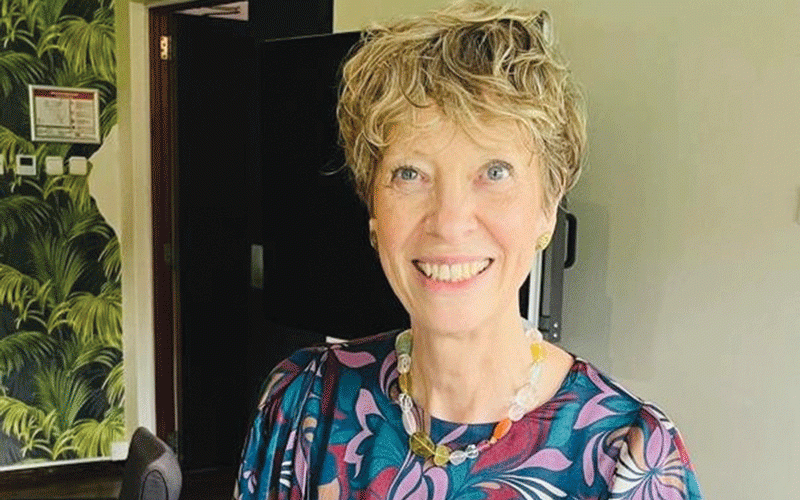
IN January this year, more than 1 000 households in Mbire district lost their possessions when floods swept through Mashonaland Central province, in northern Zimbabwe, as the devastating effects of climate change hit.
The same fate visited villages in the neighbouring Muzarabani area after flush floods. The most intriguing phenomenon is that the two districts do not receive much rain. The climatic conditions are generally humid subtropical with a yearly average temperature of 23,24ºC and these are 0,51% higher than Zimbabwe’s averages.
According to weather experts, the districts typically receive about 119,17mm with 127,96 rainy days (35,06% of the time) annually. But the low lying areas are prone to flooding in most rainy seasons.
Government has already warned villagers to brace for possible flooding during the current season. The warning has triggered memories of the beginning of 2022.
Crops washed away, livestock, waterborne diseases increased while bridges were destroyed making roads impassable during the floods. Electricity was cut off the grid in some areas after poles collapsed.
The affected areas include Karai (Ward 8), Chitsungo (Ward 10), Mushumbi (Ward 9), Nyambudzi, Chikafa (Ward 12), Shange, Madzomba, Kanongo (Ward 3), Chidodo and Musengezi (Ward 5). Four major bridges were washed away, including Karai along the Mahuwe-Chitsungo Road, Dande on the Mushumbi-Chitsungo Road, Museka on the Mushumbi-Chikafa Road and Mukumbi on the Mushumbi-Kanongo Road. Mbire legislator Douglas Karoro said more than 1 000 households were left in need of food and shelter.
He revealed that at least 80% of farmers in the affected wards lost their crops.
The Meteorological Services Department (MSD), a fortnight ago, issued a flood warning in these low-lying northern parts of the country. MSD's head of forecasting James Ngoma said there was an increased risk of floods in river basins, wetlands and low-lying areas such as Muzarabani and Mbire.
- Stampede for Zim oilfields... US$17m raised ahead of landmark drill
- Africa's oldest dinosaur found in Zimbabwe
- ZVDT laments lack of development in Zambezi Valley
- All eyes on the Zambezi valley oil rigs
Keep Reading
“We will keep informing the nation as the days draw near. Those areas we have mentioned are all dependent on the amount of rains that would be received prior,” Ngoma said. The warning indicates that not only Mbire and Muzarabani were at risk but several parts of Zimbabwe.
Other flood-prone areas include Tsholotsho, Lupane, Harare, Kadoma, Chegutu, Chitungwiza and other urban centres.
Speaking to the Zimbabwe Independent on various environmental related issues, environment and climate research expert Darlington Muzeza said human-induced hazards have, over the past decade, increased. These, he said, are accompanied by consequences of climate change, and are felt far beyond temporary timeline loss of livelihoods and property.
“Mbire District, in an ecological Region V in the mid-Zambezi Valley, is no exception to the negative impact of climate change.
“The number of disasters in this area has grown in the recent past – and the impact is visible among the communities across the district.” He said, tragically, the villagers’ predicament has not received sufficient governmental and non-governmental attention. “The trend has been a double edged-sword of either, drought or floods that leave a trail of destruction.”
Muzeza argued that the problem had been aggravated by the projections that related climate-induced disasters were likely to affect the area. He called for urgent coordinated responses from key stakeholders and the international community.
“These interventions should, among other things, deal with the root causes of disasters to significantly increase national, local and community capacities to reduce their vulnerabilities,” he said.“Ideally, the lack of strategies and plans, and limited institutional capacities and resources at the local level affect effective responses in the affected areas.”
He said understanding these impacts is a departure point for government authorities and the private sector to undertake effective flood and drought mitigation measures.
Muzeza said resilience-building among communities in the flood-prone areas with a primary goal of achieving a substantial reduction in disaster risks was necessary.
“There has to be a concerted effort to provide comprehensive action-oriented policies, guidelines and local guidance based on a holistic understanding of local needs as far as responding to disasters,” he said.
Muzeza, however, lamented that Nationally Determined Contributions (NDC) guiding national effort in dealing with climate change appear to be divorced in terms of response. “Strategy for disaster reduction has to be anchored in terms of locational aspects and this can be strengthened further by adopting a participatory approach bringing together all stakeholders who are committed to addressing the issues,” he said.N“Fundamentally, government should coordinate programmes and activities identifying good practices done in other countries in mitigation and adaptations, look at the local gaps, and promote positive action that horizontally and vertically integrates the stakeholders,” he said.
Muzeza also lamented the national disaster and risk mitigation processes in Zimbabwe. “Views indicate that while there is a lot of talk when it comes to helping communities, the state of roads makes it difficult when the floods occur,” he said.
“The roads are in a deplorable state making only rescue by air possible and it is common knowledge that air rescue capacity in Zimbabwe is weak. “Above all, the distribution of aid to affected remote parts of the district trafficable road infrastructure is unimaginable.” Muzeza called for risk identification, early warning, awareness and knowledge management on potential flood risks. “The communication is poor with no radio or television signals, and mobile telecommunication has not been that good in the districts,” he said.
“Thus, the districts, as they remain in the vortex of vulnerability, challenges not only the government but othe r stakeholders to support sound and practical interventions for the benefit of humanity.”
Meanwhile, Reyna Trust executive director Sydney Chisi highlighted the effects of climate change in dry areas.
“Climate change comes in different forms and impact on communities. This is one of the greatest reasons why at the Paris Agreement, parties agreed that they need to at least keep global temperature increases to the pre-industrial era,” he said.
“The reason why we need that is that any increase beyond that margin would see catastrophes taking place and we are beginning to see it. We are beginning to see the world heating up faster than we thought.
“So that has resulted in catastrophes. We are seeing the melting of the icebergs. We are experiencing cyclones. There are heat waves, which eventually cause flooding and we have already experiencing successive flooding in Zimbabwe.”
Zimbabwe has also experienced successive cyclones due climate change.
“If you take note of the floods in Tsholotsho because of Cyclone Eline, you would actually begin to understand that Zimbabwe at that point in time would not have ever imagined that a cyclone would hit a place like Tsholotsho or Lupane,” he said.
Technically, Chisi said, Zimbabwe is always not prepared for disaster management in the affected region.
“At the moment while we have seen successive flooding in Chipinge, Chimanimani, Bikita and other low lying areas, those communities are relatively not prepared for any climate-change eventuality,” he said.
“So Zimbabwe has to ensure that it gears up through its disaster risk management systems to ensure that it covers all possible disasters that might occur,” he said.
Chisi also noted challenges associated with the infrastructure in urban areas.
“Our infrastructure has not been upgraded in a long time, especially. Not only that, but poor waste management where waste is being thrown in drains within cities such that even the least of water when it rains we might begin to see flooding in cities,” he said. “So there is also a need to begin to look at infrastructure development that is climate proof, which also supports climate resilience in times of excessive rains.
“Otherwise, you might actually find out that the rains that might be managed by another country which is well prepared and with well managed infrastructure might actually flood out Zimbabwe.”
Chisi said urban planning requires serious consideration of the climate dynamics in Zimbabwe. Development expert Trymore Mudere supported Chisi’s argument on mainstreaming climate change into mitigation and adaptation strategies. “This entails climate proofing our communities with the thrust being developing and implementing strategies and infrastructures that minimise the net effect of hazardous events such as extreme flooding,” he said.
“The subject is paramount for flood prone as governments and humanitarian agencies attempt to reduce the impact of flooding on key services and lives of the people.”
As a solution, Muderere proffered strategies key to climate proofing flood-prone areas.“Firstly, there is need to develop climate proof infrastructure across scales. One of the essential and rudimentary long-term approaches is the construction of dams or water holding areas, which will hold excess run-off and slowly release it into the river regime thus limiting spontaneous flooding,” he said.Strengthening drainage systems will also offset chances of water accumulation and spontaneous flooding, he said.
Muderere also called for authorities to plan human settlements away from the flooding corridors. “More often communities tend to settle in flood zones for a variety of reasons namely fertile agricultural soils, access to water among others while exacerbating exposure to flooding risks.
“One normative strategy is to essentially plan settlements away from flooding zones observing the distance from stream rule,” he said. The third strategy, according to Muderere, is building climate proof houses.
“Flooding in Southern Africa arises from tropical cyclones that has well known behaviours in terms of quantum of rains and wind speed,” he said. “Often roof top of houses are destroyed indiscriminately. The solution is two pronged. Communities should install reinforced roof top and plant more vegetation to provide wind breaks.”
The last option, Muderere stated, would be developing early warning systems to detect and predict the channel of flooding including scoping evacuation of victims to safer areas is the best climate proofing strategies. “This strategy involves mainstreaming technological applications to disaster prediction and forecasting and promoting disaster awareness information dissemination ahead of disaster occurrence,” he said.
Muderere applauded recent advances in science such as satellite detection saying these have opened new frontiers for countries to detect cloud formation, monitor and track directionality of peak rainfall events allowing establishment of early warning systems.










